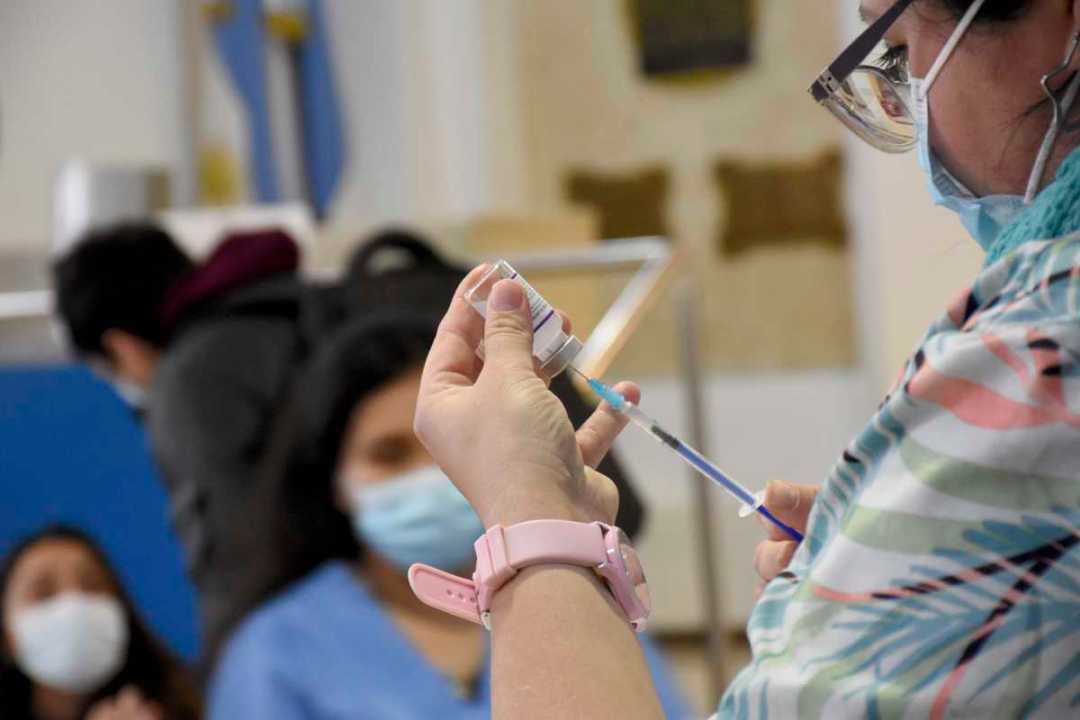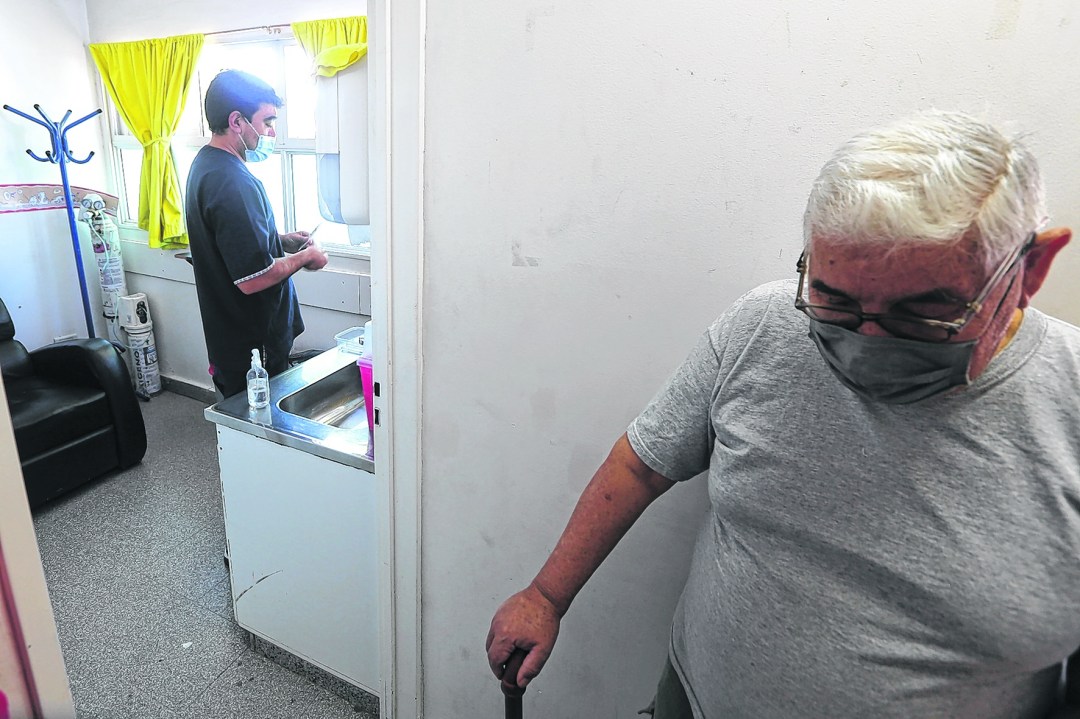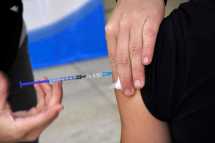Only 27% of adolescents applied the first booster of the covid-19 vaccine in Río Negro.
The figure increases among those over 18, but the data is still worrying: only 6 Rio Negro out of 10 went to get vaccinated for the third dose in the last 12 months.
It is evident that the lowest number of infections – on which there is no statistical certaintydue to very low level of testing- it made a significant part of the population relax and consider this year’s pandemic.
On alert for the increase in infections
But now that transmission of the virus has picked up again in the country, that segment of the population appears to take center stage, as messages from officials and health professionals seeking to increase the level of protection against SARS-CoV-2, in all its variants.
According to official data from the Ministry of National Health, Covid-19 infections increased by 50% during the last week (November 21 to 27), compared to the average of the previous three weeks.
- 1,745
- The Rionegrini who were reinforced until last Wednesday.
They already recommend the return of the mask for people at risk and indoors. (see separate)
In concrete numbers, this means that there were 3,323 infections in those seven days in the country, a record promptly reactivated public messages to strengthen immunization to as many Argentines as possible.
Vaccinated in Río Negro
In this framework, Río Negro is far from achieving that goal in an acceptable percentage of its population, because 376,847 reached the third dose (first booster), out of a total of 753,641 elderly people six months of life.
In other words, half of the Rio Negros able to be vaccinated remained with the initial vaccination regimen, rejecting the recommendations to apply reinforcements, an option that had been in place for a year.
In the province, the third dose was enabled on December 6, 2021, while on April 18, the second reinforcement began to be placed in hospitals and health facilities. The fifth dose was authorized at the end of last October, essentially for people over 50 and people at riskcovering only 1,745 people from Río Negro so far.

In Neuquén, 650,011 people received the first dose589,643 the second and 1,692,211 the total number of vaccines applied.
The statistics of the vaccination campaign in the province – provided to RÍO NEGRO by the Ministry of Health – prove it the first dose, deployed almost two years ago (29 December 2020 started operations in the region) it reached 92.21% of the target population of Río Negro over the age of 18coverage reduced to 86.13% for the second dose.
These levels are considered positive by the health authorities of the province, who also admit it in the following phase there was a marked change in behavior among citizenswhich resulted in only 60.66% of Rio Negro residents over the age of 18 being caught for the third dose.
The transition to the backdrop of the covid-19 pandemic was much more evident when the second reinforcement was authorized in the country, as only 9.61% of the 576,857 members of that age group maintained the preventive action.
Within subgroups of the 18+ population, behaviors were also variable.
Among health personnel there were high levels of vaccination until the first reinforcement, always reaching the entire target population, coverage which drops to 23% with the fourth dose.
The “strategic personnel” obtained excellent results with the first two doses, falling to 53.7% with the third dose and 7% with the fourth.
With those over 18 with risk factors, 94.8% signed up for the third dose, but since the fourth dose was enabled, no more than 17% have been vaccinated.
In the same strip, but without risk factors, the main difficulties for the campaign are manifested. 82.3% received the first dose, 76% the second, 46% the third and 6.5% the fourth, out of a target population of 359,225 people.
Finally, immunized pregnant women reached 15% with the first dose, falling to 11.6%, 6.4% and 1% in subsequent cases of the campaign in Río Negro.

Children and adolescents: ups and downs
Among the children and adolescents of Río Negro, the range from 3 to 11 years was the one that showed the best level of adherence to vaccination against covid-19 so far.
100% of these 172,323 boys were initially immunised, with 82.57% completing the basic program.
For the third dose, the drop is sharp, reaching only 9.34% of the target population.
Among adolescents, aged 12 to 17, the preventive path marked a 94.89% achievement at the beginning, 83.35% for completing the basic scheme, 27% with the first reinforcement and only 0. 43% with the second reinforcement.
Finally, 2.49% of children from six months to two years were immunized with the first dose, 0.62% with the second and 0.01% with the first booster.
This group has authorized the vaccination since the first days of August this year.
The children were given Sinopharm and the first booster was given with Pfizer or Moderna.Right now, both are available. Then all three doses can be administered.
They recommend going back to the chin strap and ruling out new restrictions

With the increase in coronavirus infections, Health Minister Carla Vizzotti has come out to recommend the use of chin straps “especially for people at risk” and especially in spaces with little ventilation, but he insisted that there will be no new restrictions because there is no risk of overflowing the health system.
Vizzotti recalled that from 21 September the use of the chin strap is not mandatory but “it is recommended, especially for people at risk and in poorly ventilated spaces”.
“You need to refresh your immunological memory, because vaccines reduce the chances of severe cases.”
Leda Guzzi, specialist in infectious diseases.
Infectologist Leda Guzzi agreed with the Minister of Health: “I know it’s unpleasant, but the use of the chin strap must be relaunched if this new wave of infections is consolidated. The need for people to apply vaccine boosters must be placed on the public agenda” to reduce the likelihood of new infections.
Interviewed by Río Negro before the reactivation of covid 19 with a 50% growth in infections in recent weeks, Guzzi, who is a member of the Argentine Society of Infectious Diseases, spoke of the need to “refresh immunological memory with vaccines” because “they reduce the possibility of serious cases with a risk of mortality”.
In the description of the general conditions of protection, He said the population must have at least the two-booster and over-50s, and the at-risk population must have the third-booster.
Insisting on the care that must be taken, Guzzi insisted on maintaining internal ventilation because new viruses are transmitted in the form of aerosols and disperse like a cloud in the rooms.
“Cross and permanent ventilation. And if it cannot be guaranteed, the wearing of the mandatory chin strap,” he insisted.
immune debt
infectious disease specialists repeat for these hours the concept of immunological debt. They understand that the immune system would have become inexperienced and in the face of new viruses it provides more exacerbated responsesresulting in a higher rate of serious infections.
that hypothesis attributes long-term effects to covid-19, which are the ones that could produce a deregulation in the immune system.
In this sense, Guzzi explains it We are facing a period of readjustment in the dynamics of respiratory viruses and the pandemic has not yet come out. “We had an unusual flu curve this year. In winter the situation was calm and then there were two sudden peaks: “one in the previous summer and another in September”.
The infectologist stressed the importance of boosters because the antibodies produced by the disease, like those from vaccines, drop three months after exposure to the virus.
“We are with the novelty of second generation vaccines, which are those that include the new omicron variants, they are called live and will certainly arrive in our country next year. Meanwhile the original vaccines are useful and effective against omicron”.
Despite the increase in cases in recent weeks, health authorities said an overflow of the health system “is a long way off”.
Who should take the fifth dose
All who have transited 120 days or more since their second reinforcement -or fourth dose if the first two came from Sinopharm-, they will be able to attend a vaccination to apply the third booster.
Although priority is given to those over 50 and people with risk factorsthere is no such demand for vaccines that prevents everyone who wants to be vaccinated from doing so.
Vaccination is happening without the need to book a shift.
To comment on this note you must have your digital access.
Sign up to add your opinion!



